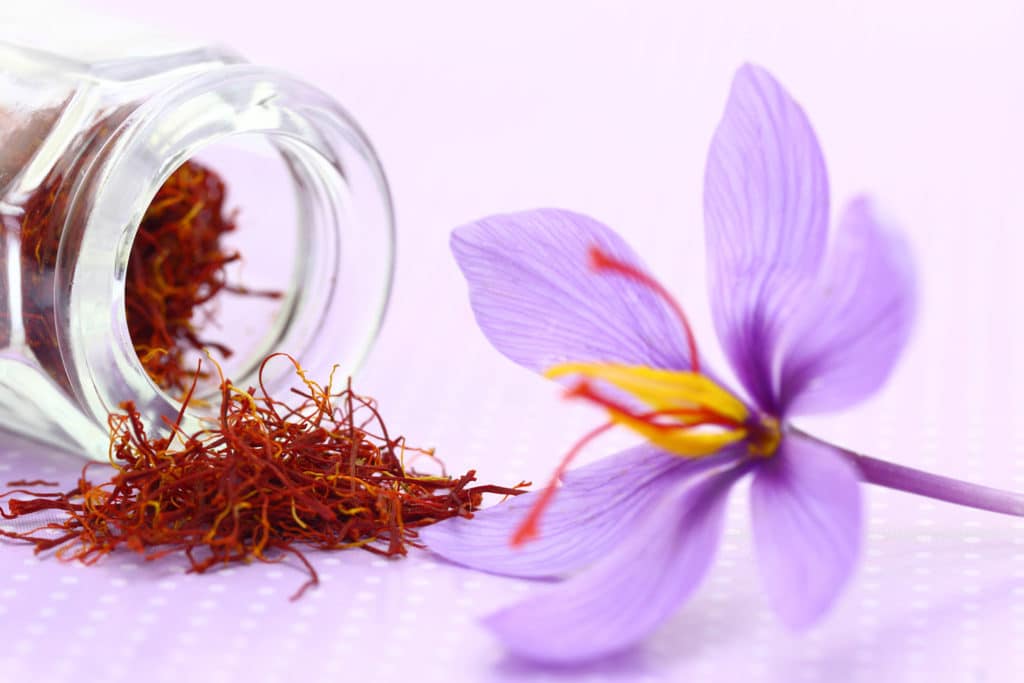October 1, 2019

Saffron is perhaps the most expensive herb on the planet and has been referred to as the “red gold”. The fine red tendrils protected by the purple petals are carefully hand picked around mid-October at the crack of dawn in very specific regions of the world including Afghanistan, Turkey, Iran and Spain. Iran produces over 90% of saffron in the world. To put things in perspective, about 36,000 flowers yield around one pound of stigmas, and over 200,000 dried stigmas, which are obtained from about 70,000 flowers, yield around 500 grams of pure saffron. Because of the cost, saffron is highly prone to being adulterated with other herbs e.g. (Gardenia jasminoide), and therefore, it is hard to find authentic material.
The active ingredients in saffron have been identified as picrocrocin, crocin and safranal. Most products on the market are standardized to one of these actives.
Saffron has been a prized herb since antiquity and many claims have been made for its health benefits. However, careful clinical research shows that saffron may be beneficial for:
Many other claims e.g. saffron improving impotency have not been substantiated in human clinical studies.
There have been over twenty human clinical studies for saffron in mood and depression. The results are pretty impressive. Saffron has been compared head to head with prescription drugs like fluoxetine (Prozac) and imipramine, and in both cases saffron was shown to be as effective yet without the side-effects. For example, in a study in forty patients, patients taking either fluoxetine (40mg) or 30mg of standardized saffron extract there was no difference between the two!
Typical dose used in many clinical studies is 15mg twice a day.
Back to Blog